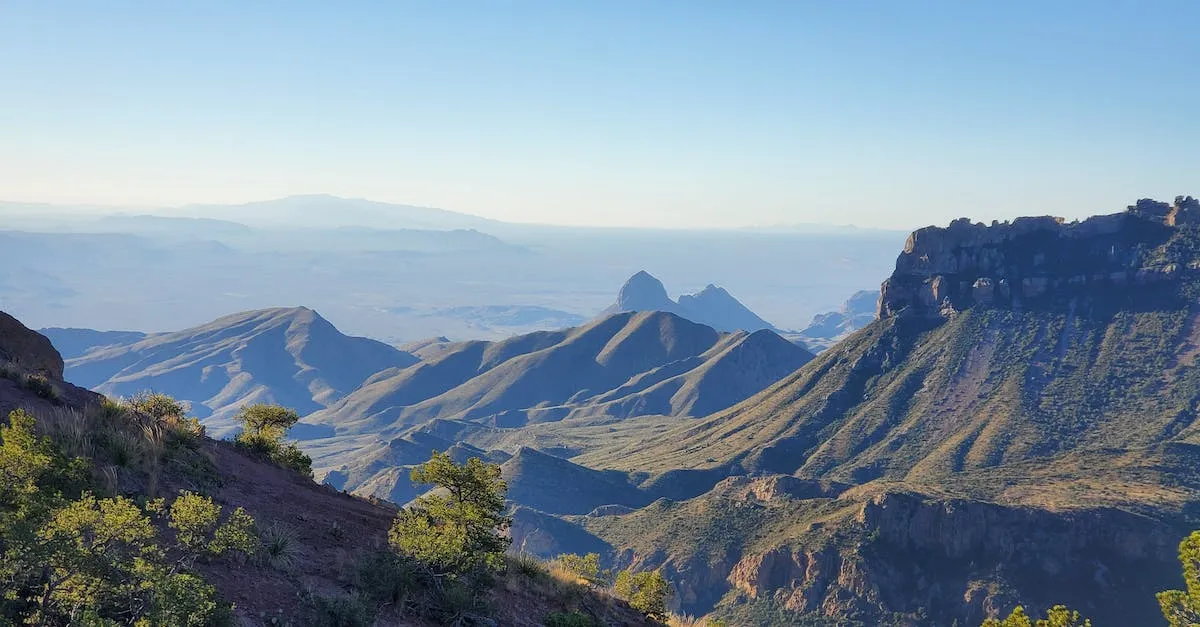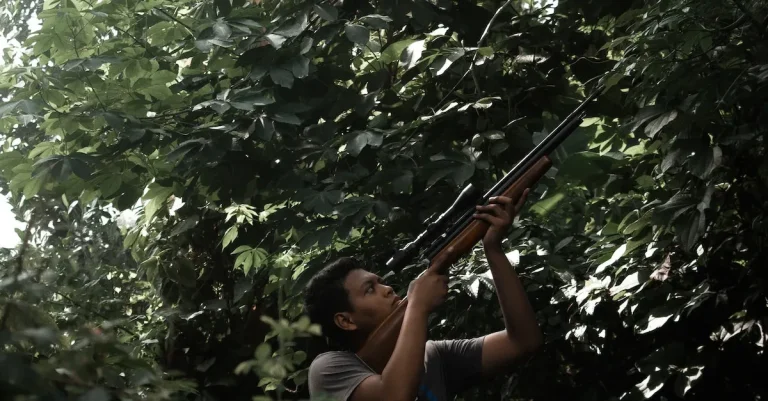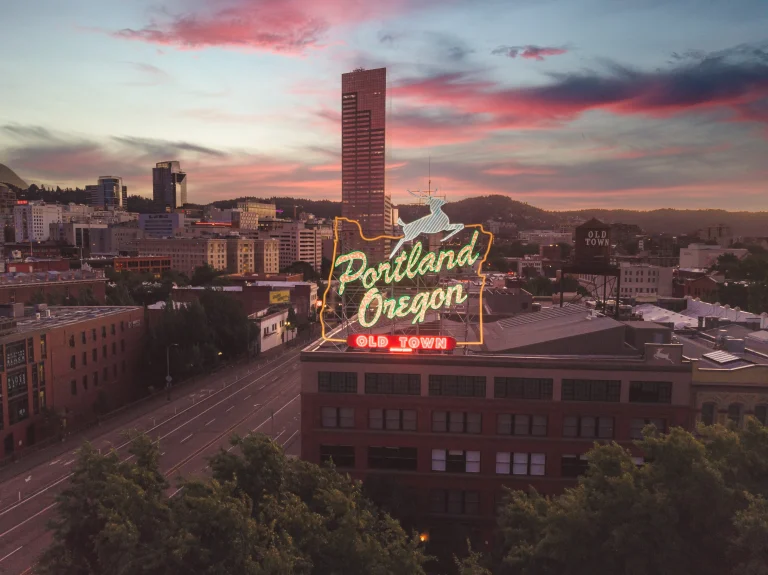Where Is The Valley In Texas?
Texas is a massive state with diverse landscapes and regions. If you’re looking for ‘the Valley’, you likely mean the Rio Grande Valley in the southernmost tip of Texas along the Mexican border. But to fully understand this unique area, let’s explore the Valley region in more detail.
In short, the Valley refers to the Lower Rio Grande Valley along the Rio Grande river in far South Texas. It consists of four counties – Hidalgo, Cameron, Willacy, and Starr counties. Some of its major cities include McAllen, Harlingen, Brownsville, and Mission.
Geographic Location
The Valley in Texas refers to the southernmost tip of the state, encompassing several counties along the Rio Grande River. It is a unique and vibrant region with a rich cultural heritage and diverse natural landscapes.
Southernmost Tip of Texas
The Valley is located in the southernmost part of Texas, making it the southernmost point in the entire state. It is bordered by the Gulf of Mexico to the east and Mexico to the south. This strategic location has played a significant role in the region’s history and has influenced its cultural and economic development.
Along the Rio Grande River
The Valley is situated along the iconic Rio Grande River, which serves as a natural boundary between Texas and Mexico. The river not only provides a picturesque backdrop but also plays a crucial role in the region’s agriculture and irrigation systems.
The fertile soil along the riverbanks supports a thriving agricultural industry, with crops such as citrus fruits, vegetables, and cotton being grown in abundance.
4 Counties
The Valley consists of four counties: Cameron, Hidalgo, Starr, and Willacy. Each county has its own unique characteristics and attractions, contributing to the overall charm of the region. From the beautiful beaches of South Padre Island in Cameron County to the historic sites in Hidalgo County, there is something for everyone to explore and enjoy.
Major Cities
The Valley is home to several major cities, including McAllen, Brownsville, Harlingen, and Edinburg. These cities serve as economic hubs for the region, offering a wide range of job opportunities, educational institutions, and entertainment options.
McAllen, in particular, has been recognized as one of the fastest-growing cities in the United States, with a thriving retail sector and a vibrant cultural scene.
For more information about the Valley in Texas, you can visit the official website of the State of Texas or the tourism websites of the respective counties.
Climate and Geography
Subtropical Climate
The Valley in Texas is known for its subtropical climate, characterized by hot summers and mild winters. The region experiences high humidity throughout the year, with average temperatures ranging from the mid-70s°F (24°C) in winter to the mid-90s°F (35°C) in summer.
The warm climate makes it an ideal destination for those seeking year-round outdoor activities and sunny skies.
Flat Terrain
The Valley is situated in the southernmost tip of Texas, bordered by the Rio Grande River to the west and the Gulf of Mexico to the east. The terrain in this region is predominantly flat, making it perfect for agriculture and farming.
The flat landscape also provides ample opportunities for recreational activities such as hiking, biking, and birdwatching. Visitors can enjoy the stunning vistas of the vast open spaces and beautiful sunsets that the Valley has to offer.
Wildlife
The Valley is home to diverse wildlife, with numerous nature reserves and wildlife refuges scattered throughout the region. The area is a birdwatcher’s paradise, attracting bird enthusiasts from all over the world.
The World Birding Center, with its multiple locations, offers visitors a chance to observe a wide variety of bird species in their natural habitats. In addition to birds, the Valley is also home to other wildlife such as deer, bobcats, and turtles.
Exploring the Valley’s natural beauty provides a unique opportunity to encounter and appreciate the rich biodiversity of the area.
Demographics
The Valley in Texas is known for its unique demographics that set it apart from other regions in the state. This article will explore three key aspects of the Valley’s demographics: its high Hispanic/Latinx population, border culture, and poverty rates.
High Hispanic/Latinx Population
One of the defining characteristics of the Valley is its high Hispanic/Latinx population. According to the U.S. Census Bureau, over 80% of the population in the Valley identifies as Hispanic or Latino.
This strong cultural influence can be seen in the vibrant traditions, language, and cuisine of the region. The Valley embraces its Hispanic heritage, with festivals like Cinco de Mayo and Día de los Muertos being widely celebrated.
The prevalence of Hispanic-owned businesses and organizations further contributes to the rich diversity of the Valley.
Border Culture
Located along the U.S.-Mexico border, the Valley is deeply influenced by its proximity to Mexico. The border culture is a unique blend of American and Mexican traditions, creating a vibrant and dynamic community. This cultural fusion is evident in the music, art, and food of the region.
The Valley is known for its Tex-Mex cuisine, which combines elements of both Texas and Mexican flavors. Additionally, the border region has a rich history of cross-cultural exchange, with families often having ties on both sides of the border.
Poverty
While the Valley has a rich cultural heritage, it also faces significant challenges, including high poverty rates. According to the U.S. Census Bureau, the poverty rate in the Valley is higher than the national average.
Factors such as limited access to quality education and healthcare, as well as a lack of economic opportunities, contribute to these high poverty rates. Efforts are being made by local organizations and government agencies to address these issues and improve the quality of life for residents.
Initiatives focused on education, job creation, and infrastructure development are helping to uplift the Valley and improve economic opportunities for its residents.
Despite these challenges, the Valley’s demographics and cultural richness make it a truly unique and vibrant region in Texas. The strong sense of community and pride in its heritage contribute to the Valley’s distinct identity, making it a place worth exploring and experiencing.
Economy and Industries
When it comes to the economy, the Valley in Texas is a thriving region with a diverse range of industries. From agriculture to healthcare, this area has a lot to offer in terms of job opportunities and economic growth.
Agriculture
Agriculture plays a vital role in the economy of the Valley. With its fertile soil and favorable climate, the region is known for its production of various crops such as citrus fruits, vegetables, and cotton.
Farmers in the Valley contribute significantly to the state’s agricultural output, making it an essential sector in the local economy. According to the Texas Department of Agriculture, the Valley has a rich agricultural heritage and continues to be a major player in the state’s farming industry.
Trade with Mexico
The Valley’s close proximity to the Mexican border has led to a strong trade relationship between the two regions. With numerous border crossings and trade corridors, the Valley serves as a gateway for trade between the United States and Mexico.
This trade relationship has a significant impact on the local economy, creating jobs and fostering economic growth. According to the U.S. Customs and Border Protection, the Valley is a major contributor to the country’s trade with Mexico, facilitating the movement of goods and services across the border.
Tourism
Tourism is another important industry in the Valley. The region attracts visitors from all over the world with its beautiful beaches, vibrant cultural events, and historical landmarks. Many tourists come to enjoy the warm weather and explore the natural beauty of the area.
The Valley is also home to several popular tourist destinations, including South Padre Island and the Rio Grande Valley Birding Festival. The tourism industry not only generates revenue for local businesses but also creates job opportunities for the residents of the Valley.
Healthcare
The healthcare industry in the Valley is growing rapidly, providing high-quality medical services to both residents and visitors. The region is home to several well-equipped hospitals, clinics, and research centers, attracting skilled healthcare professionals from around the country.
The healthcare sector in the Valley not only contributes to the overall well-being of the community but also plays a significant role in the local economy. The Texas Department of State Health Services provides resources and support to ensure the delivery of quality healthcare services in the Valley.
Culture and Lifestyle
The Rio Grande Valley in Texas is known for its vibrant culture and unique lifestyle. With a rich blend of influences from Mexican, Texan, and Native American cultures, the Valley offers a truly diverse and fascinating cultural experience for both residents and visitors.
Tejano Culture
One of the most prominent aspects of the Valley’s culture is its strong Tejano influence. Tejano refers to the descendants of early Spanish and Mexican settlers in Texas, and their cultural heritage is celebrated throughout the region.
From music to food to art, Tejano culture can be seen and felt in every aspect of life in the Valley.
Music, especially conjunto and Tejano music, plays a significant role in the Valley’s cultural scene. Local bands and musicians perform regularly at venues and festivals, creating a lively and energetic atmosphere that reflects the spirit of the community.
Festivals such as the Tejano Music Awards draw both locals and tourists, highlighting the importance of this genre in the Valley’s cultural identity.
Festivals
The Valley is also known for its vibrant festival scene. Throughout the year, various festivals celebrate different aspects of the region’s culture and heritage. From the famous Charro Days Fiesta in Brownsville to the Texas Onion Festival in Weslaco, there is always something exciting happening in the Valley.
These festivals showcase a wide range of activities, including live music performances, traditional dances, arts and crafts exhibitions, and mouthwatering food stalls. They provide an excellent opportunity for both locals and visitors to immerse themselves in the Valley’s unique cultural traditions while having a great time.
Cuisine
The Valley’s cuisine is a delicious fusion of Mexican and Texan flavors. From mouthwatering tacos and tamales to sizzling fajitas and savory barbecued meats, food lovers will find an array of delectable dishes to satisfy their taste buds.
The region’s proximity to the Gulf of Mexico also means that seafood plays a significant role in the local cuisine. Freshly caught shrimp, fish, and oysters are commonly found on menus throughout the Valley, offering a delightful coastal twist to traditional Tex-Mex fare.
Outdoor Activities
The Valley’s warm climate and stunning natural landscapes make it a haven for outdoor enthusiasts. Whether you enjoy hiking, birdwatching, fishing, or simply soaking up the sun on one of the region’s beautiful beaches, there is something for everyone to enjoy.
The Valley is home to several state parks and nature reserves, offering ample opportunities for exploring the diverse flora and fauna of the region. The Santa Ana National Wildlife Refuge, for example, is a popular destination for birdwatchers, with over 400 species of birds recorded in the area.
For those seeking more adventurous activities, the Valley also boasts excellent golf courses, horseback riding trails, and even sand dunes for sandboarding. With its abundance of outdoor recreational opportunities, the Valley truly offers a lifestyle that embraces and celebrates its natural surroundings.
Conclusion
In summary, the Valley region of Texas refers to the four counties of the Lower Rio Grande Valley along the southern border. It has a subtropical climate, Hispanic-majority population, and economy tied to Mexico trade, agriculture, healthcare and tourism. The Tejano culture and cuisine create a unique Latino flair. With its location on the US-Mexico border, the Rio Grande Valley offers a distinctly South Texan and borderland cultural experience.








